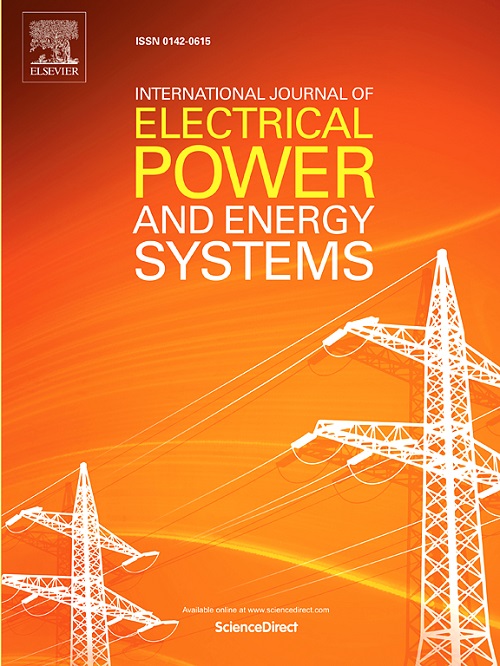多vscu系统不协调振荡特性分析与评价
IF 5
2区 工程技术
Q1 ENGINEERING, ELECTRICAL & ELECTRONIC
International Journal of Electrical Power & Energy Systems
Pub Date : 2025-03-22
DOI:10.1016/j.ijepes.2025.110607
引用次数: 0
摘要
以往的研究表明,在稳态或准稳态运行条件下,交流输电线路上可能会出现两个或三个电压源控制单元(VSCU)之间的不协调现象。随着本地交流电网中电压源控制单元数量的增加,发生多电压源控制单元不协调的概率也会增加,这可能会导致更复杂的振荡。针对多 VSCU 系统中的不和谐现象,本文分析了电网侧的不和谐振荡(DHO)特性,并评估了不和谐程度。首先,本文对频率不和谐问题进行了分类,并详细阐述了具有多个不和谐 VSCU 的本地交流电网等效模型。其次,讨论了不和谐运行条件下的负载和线流振荡特性。定义了不和谐程度的评估指标。最后,基于不同负荷水平和拓扑结构的案例研究显示了功率流的异常特征以及不和谐程度与功率流之间的变化规律。相关结果可为监测不协调和验证 DHO 抑制方法提供参考。本文章由计算机程序翻译,如有差异,请以英文原文为准。
Characteristic analysis and assessment of disharmony oscillation in multi-VSCU system
Previous studies have shown that disharmony among two or three voltage-source-controlled units (VSCUs) may occur on alternating current (AC) transmission lines under steady-state or quasi-static operating condition. As the number of VSCUs increases in a local AC power grid, the probability of multi-VSCU disharmony occurrence increases which may lead to more complex oscillation. For disharmony in multi-VSCU system, this paper analyzes the disharmony oscillation (DHO) characteristics on power grid side and evaluates the degree of disharmony. First, this paper classifies the frequency disharmony problem and elaborates on the equivalent model of the local AC power grid with multiple disharmonized VSCUs. Second, load and line flow oscillation characteristics under disharmony operating condition are discussed. The index for evaluating the degree of disharmony is defined. Finally, case studies based on different load levels and topologies show the abnormal characteristics of power flow and variation law between the degree of disharmony and power flow. The relevant results can provide a reference for monitoring disharmony and verifying DHO suppression methods.
求助全文
通过发布文献求助,成功后即可免费获取论文全文。
去求助
来源期刊
CiteScore
12.10
自引率
17.30%
发文量
1022
审稿时长
51 days
期刊介绍:
The journal covers theoretical developments in electrical power and energy systems and their applications. The coverage embraces: generation and network planning; reliability; long and short term operation; expert systems; neural networks; object oriented systems; system control centres; database and information systems; stock and parameter estimation; system security and adequacy; network theory, modelling and computation; small and large system dynamics; dynamic model identification; on-line control including load and switching control; protection; distribution systems; energy economics; impact of non-conventional systems; and man-machine interfaces.
As well as original research papers, the journal publishes short contributions, book reviews and conference reports. All papers are peer-reviewed by at least two referees.

 求助内容:
求助内容: 应助结果提醒方式:
应助结果提醒方式:


